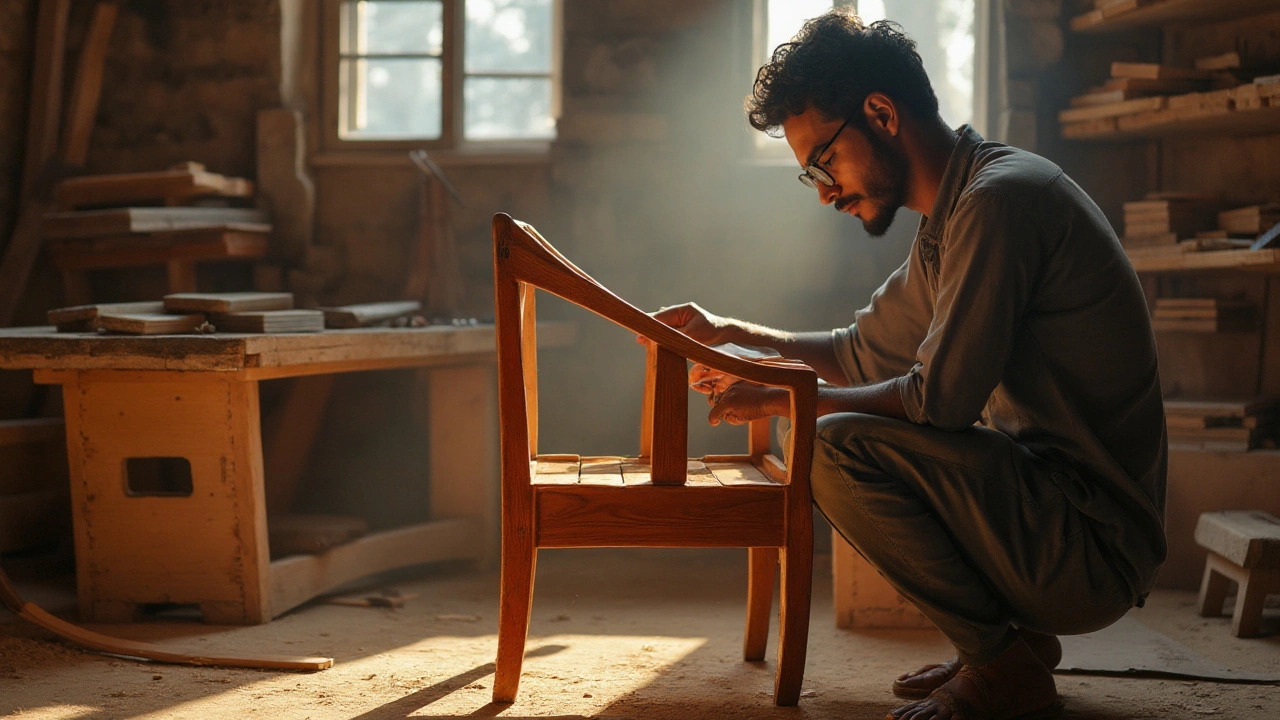Hardwood: Sustainable Uses, Furniture, and Gardening Insights
When working with Hardwood, dense wood from broad‑leaf trees, prized for strength and durability, you’re dealing with a material that blends natural beauty with long‑term performance. Also known as hard wood, hardwood is a cornerstone of construction, furniture, and even some high‑value plants. Its tight grain makes it resistant to wear, which is why it shows up in everything from kitchen cabinets to outdoor decking. Below we’ll unpack how hardwood connects to other key topics you’ll see across our articles.
Why Wooden Furniture Relies on Hardwood
One of the most common destinations for hardwood is Wooden Furniture, crafted items that blend design and function using solid timber. In India, cities like Saharanpur have built a reputation for producing sturdy wooden pieces that last generations. The link is simple: hardwood’s strength allows artisans to carve intricate joints without sacrificing stability, and its natural finish adds warmth to living spaces. When a chair or table is made from hardwood, it not only supports daily use but also ages gracefully, developing a patina that many owners cherish. This relationship—hardwood enables wooden furniture—shows how material choice drives product quality and consumer satisfaction.
Beyond aesthetics, hardwood contributes to sustainability. Many manufacturers now source timber from certified forests, ensuring that each board harvested supports replanting and biodiversity. This practice aligns with the broader goal of responsible timber management, where hardwood becomes a renewable resource rather than a one‑off commodity.
Speaking of valuable timber, one particular hardwood stands out in the Indian market.
When you hear about high‑price plants, Sandalwood, an aromatic hardwood prized for its oil and fragrance often tops the list. Sandalwood’s dense heartwood commands premium prices both domestically and abroad, making it a prime example of how hardwood can translate into economic opportunity. Its oil extraction process relies on the same durability that defines other hardwoods, allowing the tree to survive selective harvesting while still producing aromatic compounds. This connection—hardwood provides the raw material for sandalwood—highlights a niche where ecology, culture, and commerce intersect.
For gardeners, hardwood isn’t limited to furniture or fragrance; it also plays a subtle role in soil health. When soil becomes overly compacted, it mimics the “hard” quality of wood, restricting root growth and water movement. Understanding Soil Hardness, the degree of compaction that limits aeration and drainage helps growers select the right irrigation methods, such as drip systems under mulch, to keep the ground loose and fertile. Techniques discussed in our articles—like rehydrating dry, hard soil—are essentially about softening a “hard” environment, much like treating hardwood with proper finishes to prevent cracking. The parallel shows that concepts from timber work can inform better gardening practices.
All these threads—hardwood’s role in wooden furniture, its value in sandalwood, and its influence on soil hardness—create a web of practical knowledge. Below you’ll find a curated collection of articles that dive deeper into each area, from container garden watering schedules to the latest trends in plastic demand. Whether you’re a woodworker, a gardener, or just curious about sustainable materials, the posts ahead will give you actionable tips and fresh perspectives on making the most of hardwood in everyday life.
Discovering the Toughest Wood: Strength for Furniture in India
India is home to a rich diversity of wood types, with some offering remarkable strength and durability for furniture making. Teak, rosewood, and sal wood are popular choices due to their robustness and aesthetic appeal. Understanding the properties of each wood type helps manufacturers and buyers select the right material for their needs. This guide explores these woods, their characteristics, and what makes them ideal for sturdy furniture.
- manufacturing
- India
- food processing
- garden tips
- rice cultivation
- government schemes
- balcony garden
- urban gardening
- balcony gardening
- profitable business
- business ideas
- plastic manufacturing
- drip irrigation
- plant care
- steel manufacturing
- sustainable gardening
- startup ideas
- steel industry
- flower gardening
- textile manufacturers






